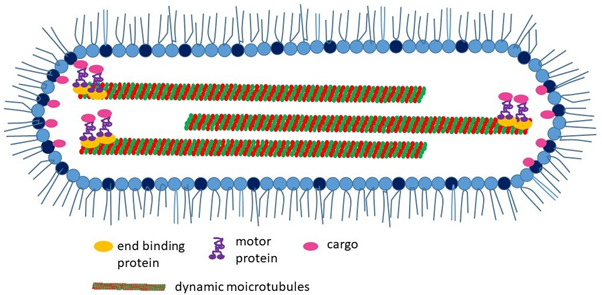Reconstitution of gradient in elongated droplets
Renu Maan
Gradient formation plays crucial role at cellular and multicellular level. For example, at multicellular level gradients of morphogens are known to control the spatio-temporal differentiation of cells during embryogenesis. Similarly, at the level of a single cell, formation of gradients is now known to control, division, migration and set polarity. In a single cell, a myriad of mechanisms are involved in every single process. This is why a bottom up approach is need to understand the mechanism involved one single cellular process at a time.
Fission yeast cells are rod shaped eukaryotic cells that divide form the middle every time it reaches a predefined length during its growth. The gradients of Pom1 and DYK-family kinase, originating from the poles, are argued to be regulating the spatio-temporal progression of cell division. Our aim is to find the minimum set of components and conditions to reconstitute the Pom1 gradient into the elongated droplets with monolayer of lipids.
Using microfluidics and the tip tracking, we aim to reconstitute Pom1 gradient inside a yeast cell size elongated droplet as depicted in the schematic shown below.
